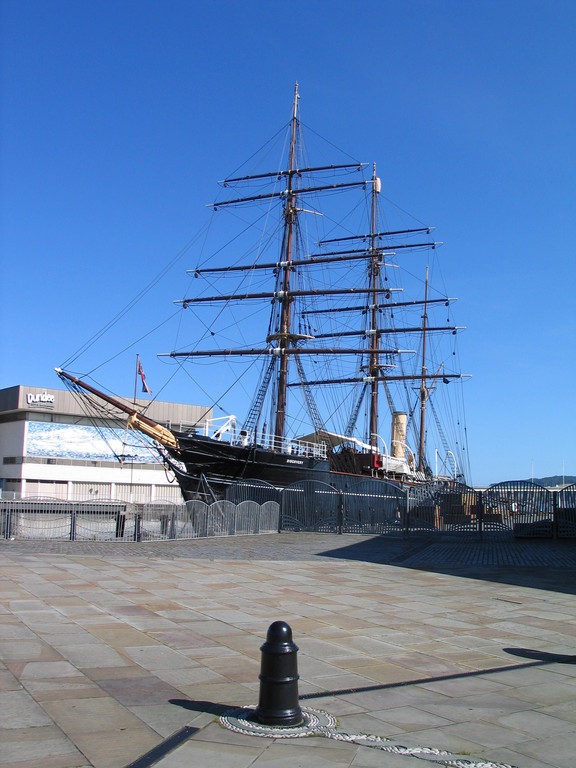Royal Research Ship Discovery
Royal Research Ship Discovery, three masted barque rigged vessel, mainly wood construction, originally with an auxillliary steam engine. Although she can be regarded as the sole survivor of Dundee’s shipbuilding and whaling tradition ,RRS Discovery was also the first ship build specifically for research, at a cost of £51,000, and is most famous as Captain R F Scott's first ship into Antarctica. She left Dundee for London in June 1901, then to Capetown, New Zealand, and finally crossing the Antarctic Circle on 3 January. Anchoring in an inlet in McMurdo Sound, she remained here for two years, trapped by the ice. Early attempts at conquering the South Pole were launched from her. Finally, in February 1904, controlled explosions freed her and she eventually returned to London in September of that year. Put up for sale, she was bought by the Hudson Bay Trading Company in 1905 and, with a number of changes, worked as a cargo carrier in the North Atlantic. From 1912-15 Discovery was laid up in London.
In 1916 she was sent to rescue Ernest Shackleton and his party in desperate trouble on their ENDURANCE Expedition, although she was not needed. Chartered thereafter by the French government, her war work included transporting ammunition to Russia. She was charted by a number of companies in the period up to 1920 for merchant work in the North Atlantic but between 1920 and 1922 she was again lying idle. She was given a major refit in 1923-5, by Vosper of Southampton at their ship repair yard at Gosport and used for marine conservation work, particularly whale stocks in the Southern Ocean and other areas of oceanographic studies until 1927.Her next important voyage was in 1929.
The British Government lent her to the BANZAR Expedition, a major Antarctic scientific research programme being undertaken by Britain, New Zealand and Australia, which included surveying the Antarctic coastline between Queen Mary Land and Enderby Land, and planting the British flag 'wherever practicable to do so' . The ship carried a Gipsy Moth bi-plane which had two pilots for aerial survey with the expedition's photographer, Frank Hurley. Laid up in East India Docks in 1931, she was given to the Boy Scouts as a training ship and hostel five years later, although she was also used for training by the Royal Navy during the Second World War.
In 1955 she was transferred to the Admiralty, to be used as a drill ship by the Royal Naval Auxiliary Reserve, although she continued to be used by the Sea Scouts. Deterioration in her condition and the need for extensive repairs almost led to her demise in the late 1970s. The Ministry of Defence could not justify the repair expense. A solution was found by transferring her to the Maritime Trust who began vital repair work on her and made her into a floating museum on the Thames. Finally in November 1985, the decision was made to take DISCOVERY home to Dundee. She brought back cradle on the massive support ship, HAPPY MARINER, too precious to be risked under tow in the North Sea. She was welcomed home by a large crowd on April 2nd 1986.
| Number: | DUNIH 2007.10 |
| Name: | Royal Research Ship Discovery |
| Date: | Not Specified |
| Maker: | Dundee Shipbuilding Company |
| Location: | On Display |




















